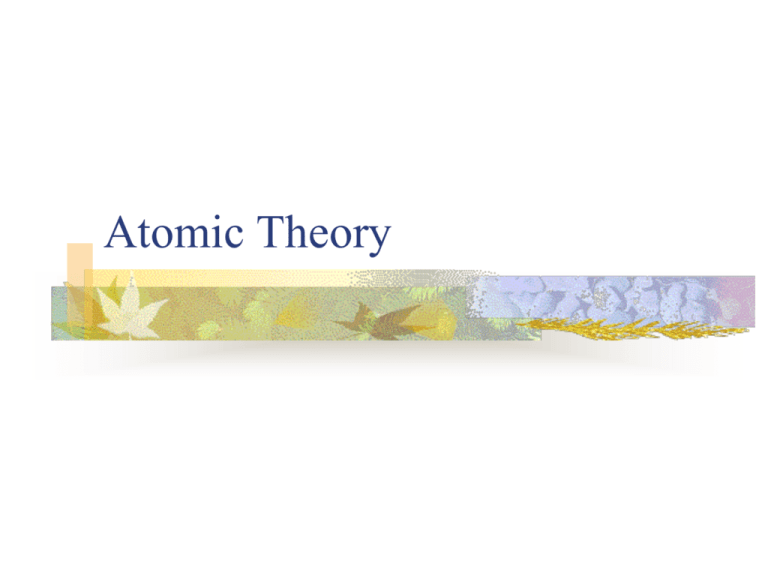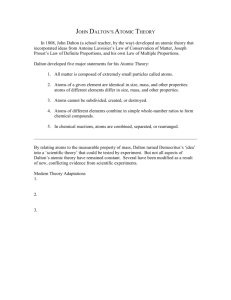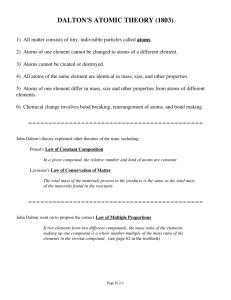Atomic Theory
advertisement

Atomic Theory History of Atom Early Greeks believed that matter consisted of tiny particles – they called the “atoms” John Dalton English school teacher in 1800’s Proposed atomic theory Dalton’s Atomic Theory All matter is composed of tiny particles called atoms Atoms of a given element have the same size, mass, and physical properties Atoms cannot be subdivided, created, or destroyed Atoms can combine in simple, wholenumber ratios to form compounds In chemical reactions, atoms can combine, separate, or rearrange Dalton’s Theory Today Dalton’s theory still holds true today with a few exceptions Atoms can be subdivided in nuclear reactions Atoms of he same element can have different masses – they are called Isotopes Law of Conservation of Mass Matter and its mass cannot be created or destroyed Law of Definite Composition In a compound, the ratio of atoms is always the same For example: water (H2O) always has a mass ratio of 1:8 In water there is always 1 gram of water for 8 grams of oxygen Law of Multiple Proportions Two or more different compounds are composed of the same 2 elements, they are whole number ratios of each other Compound Name Compound Symbol Carbon Monoxide CO Carbon Dioxide CO2 Which of the following is not part of Dalton’s Atomic Theory A) B) C) D) Matter is made of atoms Atoms can be subdivided Atoms combine or separate in chemical reactions Atoms cannot be created or destroyed In water, the mass ratio of hydrogen to oxygen is 1:8. If you have 10 grams of hydrogen in a sample of water, how many grams of oxygen is there A) B) C) D) 16 32 80 800 In a chemical reaction 15 g of A combine with 30 g of B to form compound AB. What is the mass of AB? If the mass ratio is 3:2 in compound AB, what is the ratio is compound AB2? 3:___







